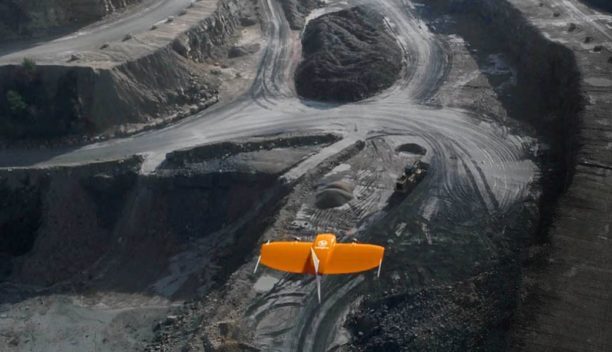
Several industry sectors – mining, construction, surveying and telecommunications – rely on aerial mapping and 3D modeling to diagnose problem areas or survey terrain for expansion of new projects. Deploying drones provides a cheaper and safer option over manned flight.
The WingtraOne PPK is a hybrid drone – a combination of fixed-wing and multi-rotor – and launches as a vertical take-off and landing aircraft.
“Vertical take-off and landing means hands-free operation and a smoother ride for the on-board sensors,” CTO of Wingtra CTO Armin Ambühl said in a press release. “Secondly, efficient flying in fixed-wing mode means far greater coverage than any comparable multirotor.”
Ambühl added that the new model can cover 320 acres in a one-hour flight – about 240 football fields. Explaining PPK, he explained: “PPK computes ultra-precise geolocations for each image by combining the GNSS data with correction data from a nearby reference receiver.”
“Our unique VTOL technology has already helped us establish a firm ground in the market with applications ranging from cadastral surveying of Africa’s largest Uranium mine to digital elevation modelling of Alpine locations,” COO Maximilian Boosfeld said.
“With the combination of VTOL capability and the PPK, we see a clear advantage over the current aerial surveying solutions. I believe that WingtraOne will generally replace fixed-wings in large coverage mapping missions in the near future as we have just set the new industry benchmark in drone photogrammetry.”
In September, the company partnered with data-imagery distributor Precision Capture to expand Wingtra’s U.S. market footprint.
Earlier this year, Swiss engineering firm Cavigelli Ingeniuere AG hired Wingtra to map Lumnezia, a Swiss Alpine valley, ahead of plans to install a 20-turbine wind farm in the remote, often inaccessible region.
“The transport, the flight preparation, the flight planning, the takeoff process, and the data transfer were very easy and convincing [sic],” Cavigelli engineer Thomas Arpagaus said of the project. “Thanks to the use of a drone, we were able to greatly reduce the costs for the surveying and evaluation of the original site for the design work. The tight project planning could be kept due to the fast and flexible data acquisition.”
Jason is a longstanding contributor to DroneLife with an avid interest in all things tech. He focuses on anti-drone technologies and the public safety sector; police, fire, and search and rescue.
Beginning his career as a journalist in 1996, Jason has since written and edited thousands of engaging news articles, blog posts, press releases and online content.
Email Jason
TWITTER:@JasonPReagan
Subscribe to DroneLife here.